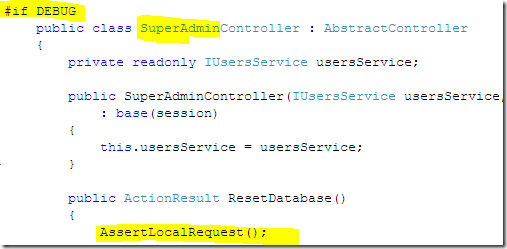The very first draft of Impleo (my CMS system), was based on sound design principles. It had good separation between the different parts (it actually had 4 or 5 projects). At some point I took a look at the code and couldn’t find it. There was a lot of infrastructure, but nothing that I could actually point to and say: “This is the application logic”.
I decided to take a different approach, created a new WebForms project, and started everything from scratch. I ported some of the code from the original solution, but mostly we just built new stuff. I stubbornly decided that I am going to apply YAGNI here, so I just scrapped everything that I usually do and started a typical web forms project, no IoC, no testing, nothing.
As expected, initially we had a really nice velocity, and if I had to hold my nose a bit during some parts, I was willing to go with that.
The next stage with Impleo, however, is to turn it from just a content management system into a website framework. The difference between the two are significant, while a CMS is just about content, a website framework allows you to add custom pages and application behavior. There is an added difficulty in that I want to use Impleo for multiple sites, doing different things.
That turn it from just a custom application to a platform, and the roles there are quite different. For that, just going with the approach that I used so far would have been disastrous. I tried, and spiked some things, but none of them made me happy. I decided that I really need to stop, and since I have a working version, I can “refactor” it to a better shape. I put refactor in double quotes intentionally.
My method included creating a new MVC project, add some integration tests and then porting everything from the WebForms to the MVC project. Overall, it was a pretty simple, if tedious, process.
The most difficult thing along the way was that I was doing this while I was flying, and for some stupid reason, I could either charge the laptop battery or use the laptop, so I had to make frequent stops to recharge.







